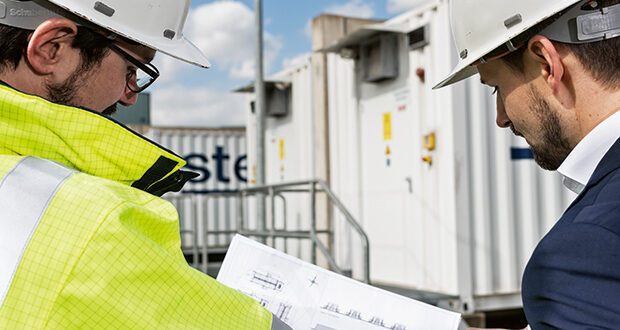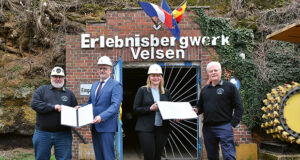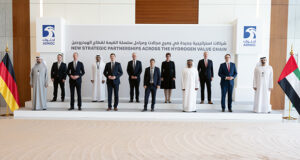HydrOxy Walsum, STEAG’s hydrogen project in Duisburg, North Rhine-Westphalia, is taking shape: Based on a favorable feasibility study for a water electrolysis plant with a capacity of up to 520 MW, jointly prepared by the project partners STEAG GmbH, Essen/Germany, and thyssenkrupp Steel AG, Duisburg/Germany, an agreement in the form of a memorandum of understanding has now been reached on the planned delivery of hydrogen and oxygen to thyssenkrupp Steel from the neighboring STEAG site in Duisburg-Walsum (Figure 1).
This will see the planned water electrolysis facility making an important contribution to the decarbonization of Europe’s largest steelmaking site. “Hydrogen is playing an increasingly important role in the energy transition,” says Ralf Schiele, STEAG director with responsibility for Market and Technology. He points out that hydrogen offers the opportunity to avoid CO2 emissions in industry, the mobility sector and the energy industry, and thereby to achieve the targeted climate goals.
In the case of the steel industry, hydrogen and oxygen, which is automatically produced as a by-product during synthetic hydrogen production, mean that the use of carbon-rich coke can be dispensed within iron production in the future. “Our goal is to make thyssenkrupp Steel climate neutral by 2045. As an interim step, we are already aiming to significantly reduce our emissions by 30 % by 2030,” says Marie Jaroni, Head of Decarbonization at thyssenkrupp Steel. STEAG’s planned water electrolysis in Walsum will make an important contribution to achieving these ambitious goals, she adds.
With the agreement that has now been reached, the large-scale project is entering its next phase: “The positive outcome of the feasibility study and the plan for thyssenkrupp Steel to purchase a large proportion of the hydrogen generated in Walsum in the future mean we can start drumming up funding and private investment capital,” says Karl Resch, who negotiated the memorandum of understanding with thyssenkrupp on behalf of STEAG. The signing of the agreement thus marks an important milestone on the road to implementing the project, he remarks.
For STEAG itself, the agreement reached is not merely an important step towards implementing an ambitious energy project. “By guiding the “HydrOxy Walsum” project step by step to success, we are also continuing to drive forward the successful transformation of the STEAG Group as a whole,” Andreas Reichel, Chairman of STEAG’s Board of Management emphasizes. In the course of the coming twelve months, Germany’s formerly biggest producer of power from hard coal will have completed its own coal phase-out to a large extent. At the same time, STEAG is successfully realigning itself to the future growth areas in the energy industry, i. e. with ambitious hydrogen projects in the Ruhr and Saar regions and the almost completed new-build project for a combined cycle gas turbine power plant in Herne.
The investment decision for the water electrolysis project with an installed capacity of up to 520 MW at the Walsum site is expected to be taken by 2023 at the latest, with delivery to thyssenkrupp Steel planned to start in 2025. “We will then put a so-called direct reduction facility into operation on the thyssenkrupp Steel site in Duisburg. This will enable iron to be produced with almost zero emissions using hydrogen rather than by burning coke in a blast furnace,” Jaroni explains.
STEAG guarantees that the hydrogen produced in Walsum will be “green”, or in other words climate neutral. “The water electrolysis will operate entirely with electricity generated from renewable sources. This will enable zero-carbon hydrogen production, which means the steel produced using our hydrogen will also be climate neutral when viewed across the entire value chain,” says Schiele. (STEAG/Si.)



